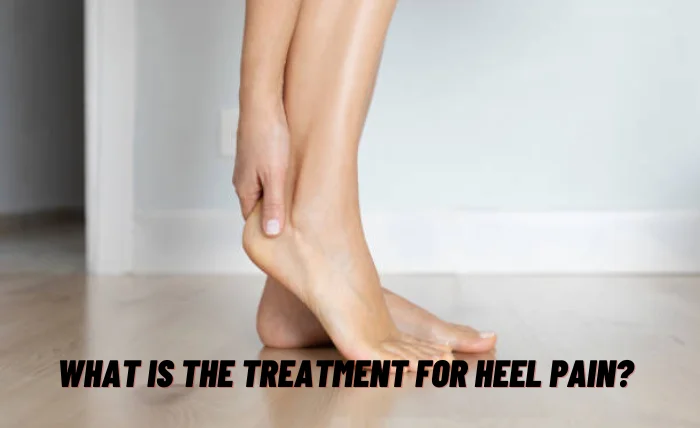Heel pain can turn a simple walk into a challenging task. But here’s some good news: effective treatments are available. Whether it’s due to plantar fasciitis, Achilles tendinitis, or another cause, the right approach can bring relief. Imagine stepping out of bed without that sharp sting in your heel or enjoying a stroll without discomfort.
This introduction to heel pain treatment will guide you towards understanding the options, from simple home remedies to medical interventions. Let’s embark on a journey to pain-free walking. Ready to learn how? Read on to find your path to comfort.
What Is the Treatment for Heel Pain Heel Pain

Before diving into treatment options, it’s essential to understand what heel pain is and its potential causes. Heel pain can stem from several factors, including plantar fasciitis, Achilles tendinitis, heel spurs, and other foot-related issues. Identifying the cause is the first step in selecting the most effective treatment method.
Home Remedies and Self-Care
Rest and Ice: The initial approach to treating heel pain involves rest and applying ice to the affected area. This can help reduce inflammation and alleviate pain.
Exercise and Stretching: Simple exercises and stretches can strengthen foot muscles, improve flexibility, and reduce pain. Focusing on the Achilles tendon and plantar fascia stretches can be particularly beneficial.
Proper Footwear: Wearing shoes that provide adequate support and cushioning can prevent and alleviate heel pain. Orthotic inserts may also be recommended to provide extra support where needed.
Medical Treatments
When home remedies are not enough, it’s time to consider medical treatments. These can range from over-the-counter pain relievers to more specialized approaches.
Medications: Nonsteroidal anti-inflammatory drugs (NSAIDs) like ibuprofen can help reduce pain and inflammation.
Physical Therapy: A physical therapist can tailor a set of exercises to strengthen your foot, improve its mechanics, and alleviate pain.
Corticosteroid Injections: For more severe cases, corticosteroid injections may be used to reduce inflammation and pain. However, these should be used sparingly as they can weaken the tissues in the foot over time.
Advanced Treatments
In cases where conventional treatments don’t provide relief, advanced treatments may be considered.
Shock Wave Therapy: This non-invasive method uses sound waves to stimulate healing in the affected area. It’s particularly useful for chronic heel pain that hasn’t responded to other treatments.
Surgery: As a last resort, surgery might be necessary to relieve pain and correct the underlying issue. This could involve removing a heel spur or releasing part of the plantar fascia.
Prevention: Avoiding Heel Pain
Maintain a Healthy Weight: Extra weight can put additional pressure on your feet, leading to heel pain.
Wear Appropriate Shoes: Choose footwear that provides support and cushioning, especially if you spend a lot of time on your feet.
Gradually Increase Activity Levels: Avoid sudden increases in physical activity to prevent overstraining your feet.
Regular Stretching: Incorporate stretching into your daily routine to keep your feet flexible and strong.
Conclusion
Heel pain can significantly impact your daily life, but with the right approach, it can be managed and treated. Start with home remedies and self-care, and if necessary, progress to medical and advanced treatments. Remember, prevention is key to avoiding heel pain, so take care of your feet, choose your footwear wisely, and maintain an active, healthy lifestyle.

